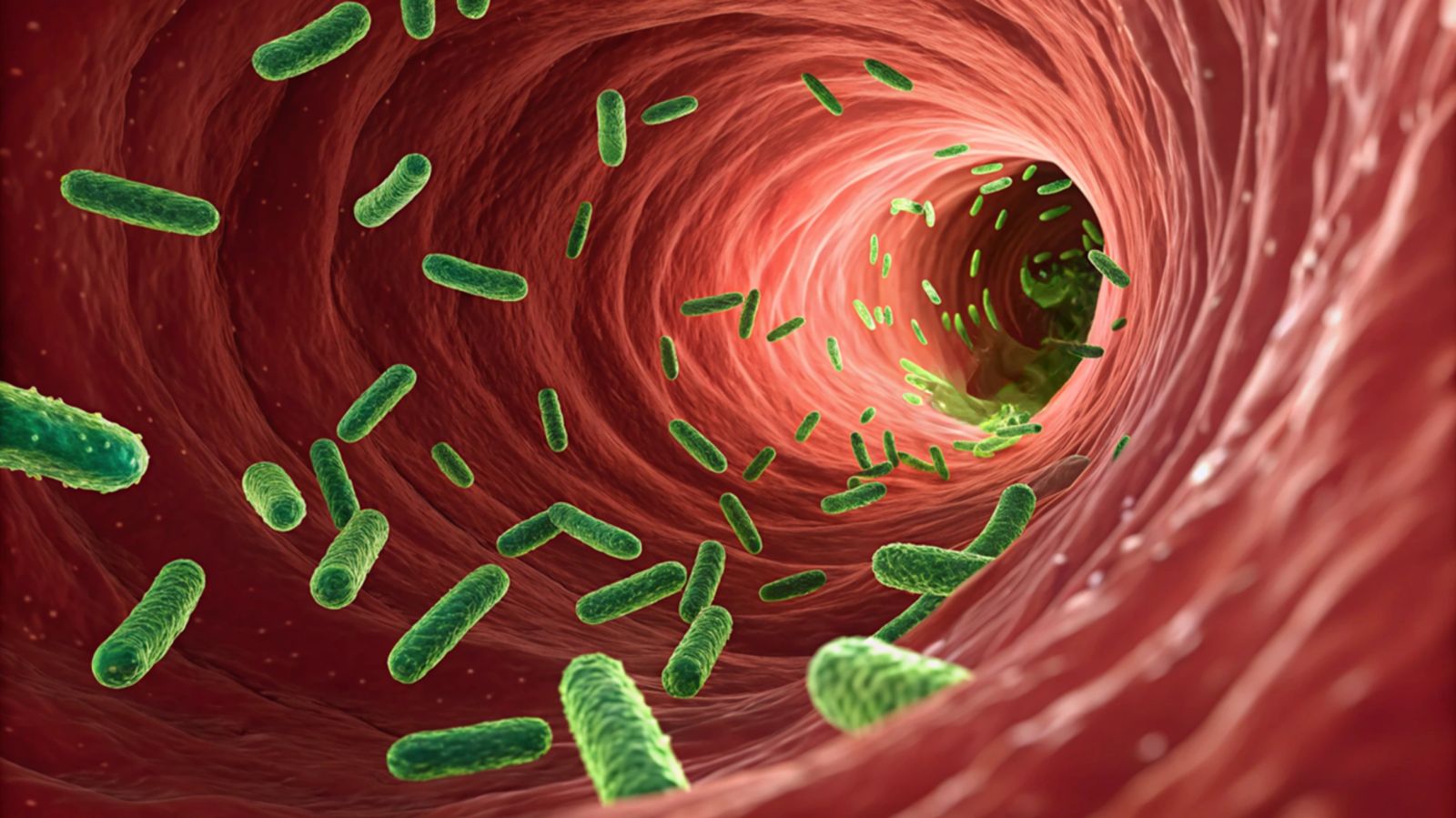Is it true that there are more microbes than cells in the human body? 😯
Published by Adrien,
Source: The Conversation under Creative Commons license
Other Languages: FR, DE, ES, PT
Source: The Conversation under Creative Commons license
Other Languages: FR, DE, ES, PT
Follow us on Google News (click on ☆)
It is hard to do our shopping without being offered products to protect our microflora! Our body is said to host ten times more bacteria than cells. Really?

Our digestive system contains a huge number of bacteria.
Nobeastsofierce/Shutterstock
The microflora or microbiota is the collection of microorganisms that normally reside in our body. Its secrets were popularized by Dr. Giulia Enders in her book "Le charme discret de l'intestin" (The Subtle Charm of the Gut).
This best-seller largely contributed to the enthusiasm around the topic! However, the discovery of intestinal microflora is over a century old. We owe it to the microbiologist Élie Metchnikoff, Nobel Prize winner in Medicine in 1908. Over time, technological advances made it easier to study the microbiota, and in 1977, the famous ratio of one human cell for ten bacteria was published by American microbiologist Dwayne Savage.
Difficult-to-measure amounts of microbes and cells
In 1972, biochemist Thomas Luckey estimated that each gram of human feces contained one hundred billion bacteria, and that the digestive system held about 2.2 pounds (1 kg) of them. By multiplying and considering that the majority of bacteria dwell in fecal matter, the estimate for the entire body was thus 100 trillion bacteria. In 1977, Professor Savage's team compared this number to that of human cells (10 trillion), arriving at the now-famous ratio. This 1:10 ratio quickly spread within the scientific community because it is easy to remember and provides a concrete conceptualization of the intestinal microflora. The ratio is still taught in biology classes and popular science activities.
Nearly forty years later, in 2014, microbiologist Judah Rosner published a letter in the former scientific journal "Microbe" questioning the long-standing 1:10 proportion. The beginning of his text is quite telling and reveals a paradox: "Science is governed by critical reanalysis of facts. [...] But once a fact enters the scientific literature, after a while, it becomes hard to erase."
Professor Rosner pointed out that the estimate of 10 trillion cells first appeared in a book in 1970, but that the information was not referenced. He also warned that assessing the number of human cells is, in fact, a challenge. He concluded that, even if the ratio were to be disproven, it would not diminish the importance of the microbiota in human health.
A question of method
Two years after the mentioned letter, Israeli research refuted the unshakable ratio. Professor Ron Milo's team selected the organ where the number of bacteria would be representative of the entire organism's bacteria. The microflora of the mouth, lungs, or skin was not considered, as the bacterial population there is a hundred times less dense than in the large intestine.
They took into account that the colon contains 14 ounces (400 grams) and not 2.2 pounds (1 kg) of fresh feces. Then, the team was inspired by an Italian scientific article, which estimated the number of human cells not as a whole, but organ by organ because cell sizes and masses vary greatly throughout the body.
The number of human cells thus rises threefold, to 30 trillion. The number of bacteria per cell is thus refined to 1.3 bacteria per cell. Although less than 10, the ratio is still greater than 1, so bacteria do outnumber cells. However, every time you use the bathroom, it rebalances, and human cells surpass bacteria numerically!
Viruses, bacteria, and protozoa inhabit our body
We talk about bacteria, the most analyzed component of the gut microbiota today. However, it doesn't express the full complexity of your microflora. Bacteria, yeasts, protozoa (microscopic, single-celled animals), and viruses, this is the little world that inhabits you! Our "virobiota" was long considered the overwhelming majority of the organism.
In 2021, studies revised this data downward, bringing the number of viruses in the body closer to that of bacteria. Consequently, these populations are similar to the number of human cells. But don't forget, when combined, bacteria and viruses together are in the majority!